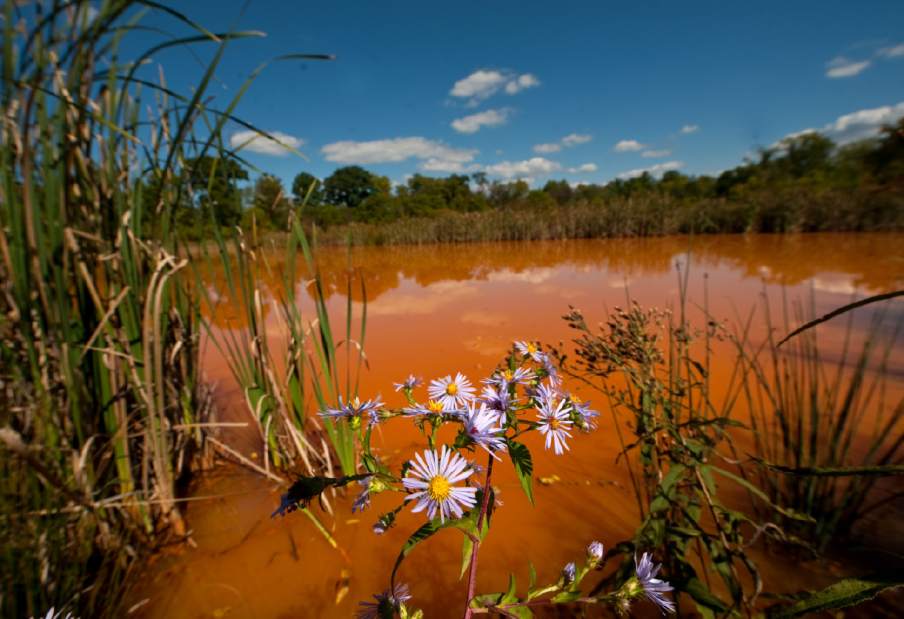Treatment ponds for mine drainage planned for Unity
A mining operation in Unity plans to build up to four treatment ponds to capture acid mine drainage flowing into a spring.
Latrobe-based Amfire Mining Co. is responsible for the 68-acre site between Route 130 and Possum Hollow Road, where a spring that feeds into an unnamed tributary of Nine Mile Run is receiving water with high levels of manganese and aluminum, according to documents filed with the state Department of Environmental Protection.
The mining company is requesting a revision to a state permit to build the treatment site, so the public can comment on the changes or request a public hearing by Monday, DEP spokesman John Poister said.
“In this case they're talking about improving the quality of the water,” he said.
The mine has been closed for many years, but the spring continues to be monitored, according to DEP documents.
The company, a subsidiary of Alpha Natural Resources based in Virginia, is proposing that a manhole catch the underground stream via a pump or a trench and then direct it to the retention ponds.
Representatives from the company did not return calls for comment.
According to the permit-revision application, phase one of the project is planned to include two ponds. One would measure 140-by-35 feet, be 6 feet deep and would hold about 55,000 gallons. Water would be held for about four days to remove some of the metals before flowing to the second pond, according to the application.
The second pond, measuring 270 feet by 40 feet and having a depth of 6 feet, would hold 150,000 gallons and remove manganese and other metals, reducing the acidity level of the water.
Both are planned to be lined with clay or a synthetic liner and treated with caustic soda, lime or soda ash.
If necessary, two more ponds would be added, according to the application.
After the metals are removed and the water is neutralized, the company proposes dredging, drying and burying the material on-site.
Susan Huba, executive director of the Loyalhanna Watershed Association, said the method has met with success in two other areas near Latrobe.
“It's very difficult to engineer something and you need a lot of space … but they're well worth it,” she said.
The St. Vincent College Wetland No. 1, which prevents abandoned-mine drainage from polluting Monastery Run, marked 20 years in November, while another system on Loyalhanna Creek, near Adelphoi Village just outside Latrobe, removes iron oxide and other metals from the water.
Huba said a third passive treatment system is planned near Baggaley Elementary School, with construction set to start within the next year.
“By getting that pollution source out of the water, quality drastically improves,” she said.
Since 1999, the state's Growing Greener program has awarded more than $60 million in grants for more than 300 acid mine drainage-related projects and some Act 13 gas drilling fees are planned to aid in funding them.
The DEP estimates there are 5,000 miles of streams in Pennsylvania affected by acid-mine drainage, Poister said.
In September 2013, the DEP issued a memo to Amfire Mining, summarizing a previous meeting, that alerted the company that long-term treatment at the Unity site was needed because the previous treatment method had not been successful.
In some cases, the mines are long abandoned and take considerable time and effort to remediate, but because Amfire Mining is an active company, the department is able to hold them accountable, Poister said.
“They are the responsible party, and when we can find responsible parties, we encourage them to clean up the water,” he said.
Mine conservation inspector Patrick Brazzon recommended approval for the project on Aug. 5.
Stacey Federoff is a staff writer for Trib Total Media. She can be reached at 724-836-6660.

